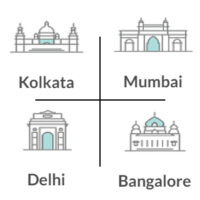Assessing the Impact: Evaluating the PLI Scheme's Success
Introduction
The key focus of the Indian Government in recent years has been to strengthen domestic manufacturing, increase self-reliance and reduce import bills. To realize these objectives, the Production Linked Incentive (PLI) Scheme was conceived to scale up domestic manufacturing capability, accompanied by higher import substitution and employment generation. Through the PLI Scheme, the Government intends to promote its flagship Make-In-India program and align with the Atmanirbhar Bharat campaign. The scheme was first launched in April 2020; India’s $24 billion production-linked incentive programme covers 14 sectors, ranging from electronic products to autos, and is crucial to boosting jobs in manufacturing, an area where India has struggled.
Beneficiaries
Several beneficiaries of the PLI scheme have been identified. So far, the Government has announced PLI schemes for 14 sectors including automobile and auto components, electronics and IT hardware, telecom, pharmaceuticals, solar modules, metals and mining, textiles and apparel, white goods, drones, and advanced chemistry cell batteries.
Sectors covered under the PLI Scheme
- PLI Scheme for the Auto Sector
Indian automakers Tata Motors and Mahindra have received domestic value certificates and qualified for payouts under the nation’s PLI scheme. The applicants under the scheme for autos had invested INR 107.55 billion as of the end of June. Apart from Tata Motors and Mahindra, four other companies have applied for certification. Twenty-three more companies are expected to apply for the certification by the end of September.
- PLI Scheme for IT Hardware
Under the PLI scheme for hardware, special focus will be for laptops to be made in India while also covering the scope for tablets, AiO PC Servers and ultra-small form factor devices. The expected incremental production under the scheme is set at INR 3.35 lakh crore. PLI scheme 2.0 for IT Hardware came into force on May 29, 2023, with a budgetary outlay of INR 17000 crore. The Union Cabinet on May 17 approved the introduction of the scheme. The Indian Government has received excellent responses from global entities including Lenovo, HP, Dell and Acer among others. The government have received applications from as many as 32 companies.
- PLI Scheme for Telecom
Under the PLI scheme, India has produced telecom products worth over INR 18000 crore. India is trying to scale it up by 5x to 10x with more capability and government support and position itself as a technology powerhouse. This year, the emphasis will be on launching the 6G network, advancements in 5G networks, the increasing use of AI in telecommunications and other domains, edge computing, Industry 4.0 and the emergence of India stack.
- PLI Scheme for Pharmaceuticals
The PLI Scheme for Pharma was approved in February 2021 to boost domestic drug production. Under this scheme, the financial outlay was expected to be around INR 15000 crore. The ministry had received 278 applicants out of which 55 applicants were selected. The scheme included biopharmaceuticals, complex generic drugs, patented drugs, cell-based or gene therapy drugs, autoimmune drugs, anti-cancer drugs etc. Companies like Sun Pharmaceutical Industries, Aurobindo Pharma, Dr Reddy’s Laboratories, and Cipla among others are the beneficiaries.
- PLI Scheme for Solar Modules
Under the PLI Scheme, the financial outlay was expected to be around INR 14007 crore and the Union Government had allocated 39600 MW of domestic solar PV module manufacturing capacity to 11 companies. The scheme has proved to be extraordinary in India’s Renewable landscape resulting in around 48 GW domestic module manufacturing capacity by 2023.
- PLI Scheme for Metals and Mining
Under this scheme, the government has selected 67 applicants from 30 companies with a financial outlay of about INR 42500 crore. Primary steelmakers like Steel Authority of India Limited (SAIL), Tata Steel and JSW Steel are present in the list of approved applicants. The scheme will incentivize the localization of steel used for specialized applications, which at present is largely imported from countries like Japan and South Korea.
- PLI Scheme for Textile and Apparel
Under the PLI scheme, 64 applications were approved and the financial outlay was INR 19798 crore. In part 1 of the scheme, the minimum investment and the minimum turnover required to be achieved for the incentive were around INR 300 crore and INR 600 crore respectively. In part 2, it was INR 100 crore and INR 200 crore respectively. PLI 2.0 is being considered with a financial outlay of around INR 4000 crore in which bedspreads, and textile accessories like lace, buttons, and zippers will be covered.
- PLI Scheme for White Goods
The PLI scheme for white goods for the manufacture of components and their sub-assemblies was approved on April 07, 2021. The financial outlay was around INR 6238 crore and offers incentives of 4-6% on incremental sales of goods made in India until FY 2029. 42 applicants with committed investment of INR 4614 crore were selected. Out of the selected 42 applicants, 26 were AC manufacturers with committed investments of INR 3898 crore and the rest were LED light manufacturers with investments of around INR 716 crore.
- PLI Scheme for Drones
Under the PLI scheme for drones, the Ministry of Civil Aviation has disbursed around INR 30 crores to the beneficiaries during FY 2022-23. The total incentive is INR 120 crore spread over three financial years.
- PLI Scheme for Advanced chemistry cell batteries
Under the PLI scheme, the government has approved the ‘National Programme on ACC Battery Storage’ for achieving a manufacturing capacity of 50 GWh of ACC to enhance manufacturing capabilities. The financial outlay was around INR18100 crore. The emphasis of the government was to achieve greater domestic value addition, keeping in mind that the levelised cost of battery manufacturing in India is globally competitive.
Current Scenario
Till March 31, 2023 the Government has disbursed around INR 2875 crore to the beneficiaries of the PLI scheme. Sectors like electronics, telecom, pharma and food processing are major beneficiaries of the scheme. Incentives claims of over INR 3421 crore have been received under the scheme for large-scale electronics manufacturing, electronics and technology products, bulk drugs, medical devices, pharmaceuticals, telecom and networking products, food items and drones, of which INR 2800 crore has already been disbursed. Till December 2022, 717 applicants were approved in 14 sectors with an expected investment of around INR 2.8 lakh crore. INR 53500 crore of actual investment has been realized. The highest disbursal of INR 1649 crore was made in large-scale electronics manufacturing followed by pharma drugs at INR 652 crore and food products at INR 486 crore. In 2021-22, there was an increase of 76% in foreign direct investment in the manufacturing sector compared to 2020-21. Under the PLI scheme for mobile phones, the focus may be to drive Apple to shift at least 18% of its global iPhone production to India by FY 2025. Currently, India’s contribution to Apple’s total smartphone production is 7%. The PLI scheme has helped to improve the export mix in local production from 16% on-year to 25%. The PLI scheme will help India to cut imports and step up exports, which can improve its macroeconomic outlook, and reduce the current account deficit by $112 billion over five years.
Drawbacks
Projects are on the ground, and investments and employment are happening. Disbursements are happening but there is a lag. Large-scale electronics manufacturing, pharma, food processing, telecom, white goods, auto and auto components are the sectors where performance is healthy whereas on the other hand high-efficiency solar PV modules, advanced chemistry cell (ACC) batteries, textile products and speciality steel need to pick up the pace. One of the many reasons behind the PLI scheme not resulting in the desired level of investment is a very short window for the scheme. Due to this, the government is considering reopening the PLI window for some sectors. As investment decisions take time to firm up, large global players have given the PLI scheme a miss in the battery sector, which is likely due to a short window. Other than the electronics sector, the scheme has not seen large-scale participation by global majors. The process of claiming incentives is also a challenge for beneficiaries.
Conclusion
PLI Schemes are helping India to become a reliable supply chain partner. PLI schemes are helping to strengthen the domestic manufacturing ecosystem and form resilient supply chains by providing financial incentives for the domestic production of certain goods. Indian companies will be globally competitive if they follow these strategies and this will help India’s transition to a high per capita income economy.





Leave a Reply